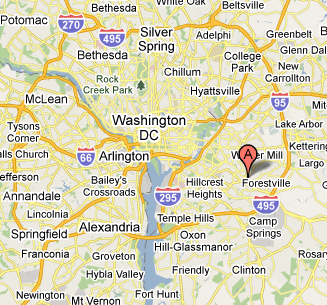Like many liberal publications, the Washington Post has a long history of promoting gun control. Today they published a lengthy, reasonably well researched article by David S. Fallis asserting that Realco, a gun shop in Forestville, Maryland, sold more “crime guns” (i.e., guns used in crimes) than any other dealer.
The relevant paragraphs:
86 guns sold by Realco [have] been linked to homicide cases during the past 18 years, far outstripping the total from any other store in the region, a Washington Post investigation has found. Over that period, police have recovered more than 2,500 guns sold by the shop, including over 300 used in non-fatal shootings, assaults and robberies.
In Maryland, Realco towers over the other 350 handgun dealers in the state as a source of guns confiscated in the District and Prince George’s County, the most violent jurisdictions in the area. Nearly one out of three guns The Post traced to Maryland dealers came from Realco. The rest were spread among other shops across the state.
Let us for the moment take these figures at face value. However, to my mind the biggest and most obvious problem with the story wasn’t what was in it, but what was missing, the elephant in the room Mr. Fellis failed to mention even once: race.
Not once do the words “African American” appear in the article, nor does the word “black” appear in reference to race.
But it is well know to anyone with even passing familiarity with Washington, D.C. that the whites in the District live overwhelmingly in the northwest “white pipeline” that runs from roughly Capitol Hill all the way up through Georgetown to the Virginia border, while blacks predominate in the rest of the city, but especially in the southeast.
Take a look at this map depicting the ethnic demography of the Washington, DC area created by Eric Fischer:

In Fisher’s map, white people are red dots, black people are blue, Hispanics are orange, and Asians are green.
Now take a look at Realco’s location in comparison to Washington DC:

Realco is not only the closest gun shop to D.C., it is smack dab in the middle of the most overwhelmingly black neighborhood in the greater D.C. area. Also, if I’m reading this map correctly, no less than three Metro bus lines (J11, J12, and J13) run right past the store at 6108 Marlboro Pike.
The reason this matters is that blacks in the United States commit a disproportionate share of violent crimes compared to the total population. Look at Table 43 of the FBI’s U.S. crime statistics for 2009. 49.3% of those arrested for murder and nonnegligent manslaughter were black, despite blacks making up only 12.4% of the U.S. population. (The reasons black crime rates are so high is are a source of endless debate (see nature vs. nurture, just for starters) and beyond the scope of this essay.)
So all other things being equal, Realco being the source of so many guns eventually used in crime makes sense, since it is the nearest gun store to the district, as well as the gun store situated most closely to a demographic group that suffers from demonstrably higher levels of violent crime than other demographic groups. Thus Occam’s Razor suggests that we look no further than the obvious for the real facts surrounding Realco.
It’s a pity David S. Fallis didn’t feel the need to share this most basic demographic context for crime with his readers.
I have to go off and walk my dog, but I’ll probably post another piece on this subject tomorrow to touch on some angles I don’t have time to address just right now.
(And if anyone has a better source for comprehensive crime statistics broken down by race specifically for D.C. and Prince George’s County, I’d love to take a look at them.)
Edited to add: Here’s my followup to this piece.
And here’s Dwight’s analysis.

